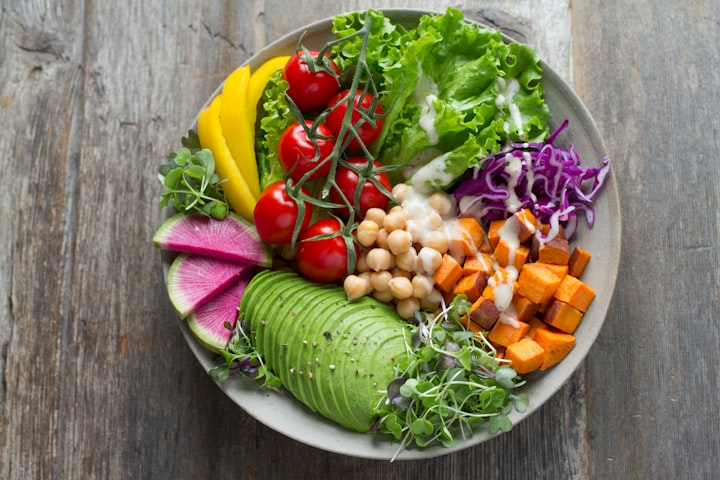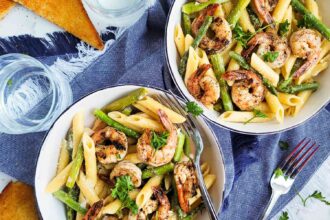Introduction to Guilt-Free Diet
Eating healthy doesn’t have to mean sacrificing the foods you love. Picture this: digging into a slice of pizza or enjoying a rich chocolate cake without feeling that familiar pang of guilt. Welcome to the world of the guilt-free diet—a way of eating that prioritizes balance, satisfaction, and enjoyment.
In our fast-paced lives, we often equate health with restriction, but it’s time to challenge that notion. Embracing nutritious meals while still indulging in your favorite treats can create a more sustainable approach to wellness. Get ready to explore how you can enjoy delicious food and maintain a healthy lifestyle all at once!
Understanding Food Guilt and Its Effects
Food guilt is a common feeling many people experience when indulging in their favorite treats. It often stems from societal pressures and unrealistic dietary expectations.
This guilt can lead to unhealthy relationships with food, causing stress and anxiety around meals. When you constantly worry about what you eat, it becomes challenging to enjoy the nutritious meals that fuel your body.
Moreover, food guilt may result in restrictive eating patterns. This cycle of deprivation followed by bingeing only perpetuates negative feelings toward certain foods.
Breaking free from this mindset requires understanding that all foods have a place in a balanced diet. Embracing moderation allows for enjoyment without remorse.
Recognizing the emotional triggers behind food choices can help shift perspectives toward healthier habits. By focusing on nourishment rather than restriction, you pave the way for a more positive relationship with food.
The Importance of Moderation in Healthy Eating
Moderation is the cornerstone of a guilt-free diet. It allows you to enjoy your favorite foods without feeling deprived. When you embrace moderation, eating becomes a joyful experience rather than an anxiety-inducing task.
This approach encourages balance in every meal. You can savor that slice of pizza or indulge in dessert while still nourishing your body with wholesome ingredients. The key lies in portion control and mindful eating.
Listening to your body’s hunger signals helps maintain this balance. Are you truly hungry, or just craving comfort? By distinguishing between physical hunger and emotional cravings, it’s easier to make conscious choices.
Transforming the way we view food plays a crucial role too. Instead of labeling some foods as “bad,” recognize them as part of a varied diet that supports both enjoyment and health goals. With moderation at the forefront, healthy living feels attainable and sustainable for everyone.
Incorporating Your Favorite Foods into a Balanced Diet
Incorporating your favorite foods into a balanced diet can be both enjoyable and satisfying. Start by assessing what truly makes you happy when it comes to food. Is it pizza, chocolate, or maybe ice cream?
Instead of cutting them out completely, think about ways to include these treats mindfully. Enjoy that slice of pizza but pair it with a vibrant salad on the side for added nutrients. This way, you indulge while still nourishing your body.
Portion control plays a crucial role here. Relish every bite rather than binge-eating in one sitting. Savoring smaller amounts allows you to satisfy cravings without guilt.
Experimenting is key as well; try making healthier versions of classic favorites using whole ingredients or alternative cooking methods. You might discover new recipes that are just as delightful yet more nutritious!
Alternative Ingredients for Healthier Versions of Comfort Foods
Comfort foods often evoke feelings of nostalgia and warmth. But they can also be heavy on calories and sugar. Thankfully, there are plenty of alternative ingredients that can create healthier versions without sacrificing flavor.
For creamy pasta dishes, consider using cauliflower puree instead of heavy cream. It delivers a rich consistency while reducing calories significantly.
Craving baked goods? Swap traditional flour for almond or oat flour to add nutrients and fiber. These options provide a delightful texture as well.
When it comes to burgers, try black beans or lentils as a base for your patties. They pack in protein while being lower in fat compared to beef.
And don’t forget about desserts! Use mashed bananas or applesauce in place of oil or butter when baking cakes and muffins. This simple change enhances moisture and adds natural sweetness without the guilt attached.
Tricks and Tips for Sticking to a Guilt-Free Diet
Sticking to a guilt-free diet can be easier with a few clever strategies. Start by planning your meals ahead of time. This helps you avoid last-minute temptations and ensures you have nutritious options ready.
Keep healthy snacks on hand, like nuts or fruit. These can satisfy cravings without derailing your goals.
Don’t shy away from experimenting in the kitchen. Find ways to recreate your favorite dishes using healthier ingredients. Cauliflower pizza crust or zucchini noodles make for satisfying swaps that keep the flavor intact.
Mindful eating is also key—slow down and savor each bite, allowing yourself to enjoy food without guilt.
Find a supportive community or friend who shares similar goals. Sharing experiences makes it easier to stay motivated and accountable throughout your journey toward a healthier lifestyle.
Conclusion: Embracing a Balanced and Sustainable Approach to Eating
Embracing a guilt-free diet is all about finding harmony between enjoyment and health. It’s essential to remember that food should be a source of pleasure, not stress. By understanding your relationship with food and recognizing the impact of food guilt, you can shift your mindset towards a healthier lifestyle.
Moderation plays a crucial role in this journey. There’s no need to eliminate your favorite foods entirely; instead, focus on incorporating them into balanced meals. This approach fosters sustainability and makes healthy eating enjoyable rather than restrictive.
Experimenting with alternative ingredients can also transform traditional comfort foods into nutritious meals without sacrificing flavor. With creativity and an open mind, you can discover satisfying substitutions that fit perfectly within your dietary goals.
Staying committed to this new way of eating requires some strategies—plan ahead, listen to your body, and allow yourself those indulgences occasionally. These practices will help reinforce the idea that it’s possible to enjoy what you eat while maintaining a balanced diet.
Adopting a guilt-free diet means embracing flexibility and joy in every meal. Prioritize nourishment but never forget the importance of satisfaction when it comes to eating well for life.










